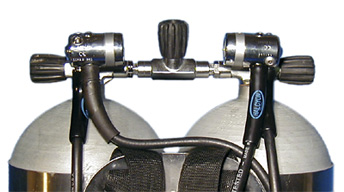I'm looking to slowly purchase gear for diving doubles, and was curious how the techies are setting up their regs. What I'm looking to get into is cave diving, wreck diving, and deep diving into wrecks and/or caves.
My big question is how each of the two regulators are set up. How many 2nd stages are used? Which side does the dry suit inflator hose come from (if I'm not using a separate bottle specifically for the suit)? Are their SPG's off each 1st stage?
Any advise will be appreciated, any bickering or "my reg is better than your reg" will be ignored. Thanks.
My big question is how each of the two regulators are set up. How many 2nd stages are used? Which side does the dry suit inflator hose come from (if I'm not using a separate bottle specifically for the suit)? Are their SPG's off each 1st stage?
Any advise will be appreciated, any bickering or "my reg is better than your reg" will be ignored. Thanks.










